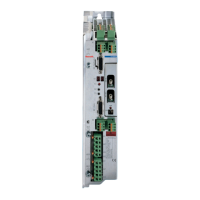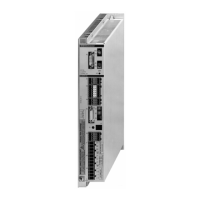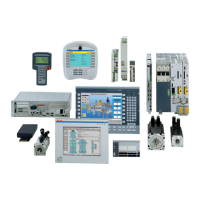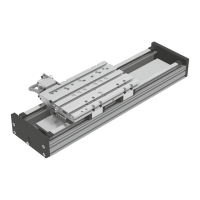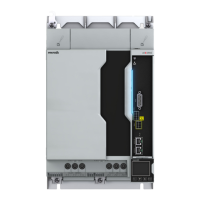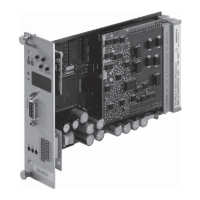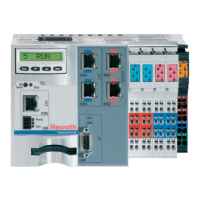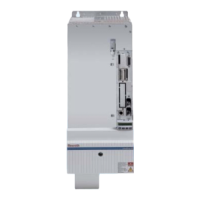8-44 Functions ECODRIVE03-FL*-04VRS
DOK-ECODR3-FL*-04VRS**-FK01-EN-P
Mode:
Velocity Loop
Proportional
Gain:
Velocity Loop
Integral Action
Time:
Remarks:
Feed axis on standard machine tool
Kp = 0.5 x • Kpcrit Tn = 2 • Tncrit
Good rigidity and good
command response
Feed axis on perforating press or turret
punch presses
Kp = 0,8 x • Kpcrit Tn = 0
High proportional gain; no
integral gain, to achieve
short transient recovery
times.
Feed drive for flying shear devices Kp = 0.5 x • Kpcrit Tn = 0 Relatively non-dynamic
control setting without
integral gain, to prevent
structural tension between
the material and the
shearing device.
Fig. 8-23: Identification of Velocity Loop Settings
Filtering of Mechanical Resonance Oscillations
Within a narrow band, the drives are able to suppress oscillations caused
by the drive train (gear) between the motor and the axis or spindle
mechanism. As a result, increased drive dynamics with good stability can
be achieved.
With torsionally rigid drive mechanisms, mechanical oscillations are
induced in the mechanical system (comprising the rotor—drive train—
load) as a result of position/velocity feedback within a closed control loop.
This behavior, called "two mass oscillation," is generally within the 400 to
800 Hz range depending on the rigidity (or elasticity) of the mechanism
and spatial volume of the system.
This "two mass oscillation" usually has a distinct resonance frequency
which can be suppressed selectively by a notch filter (band suppressor)
provided in the drive.
By suppressing the mechanical resonance frequency, the dynamics of
both the velocity and position control loops can be significantly improved
compared to control loops without a band suppression filter.
This results in greater contour accuracy and shorter cycle times for
positioning processes, leaving a sufficient stability margin.
The filter rejection frequency and bandwidth can be adjusted. The
rejection frequency is the one that is attenuated the most, while the
bandwidth determines the frequency range within which the attenuation is
less than -3 dB. A larger bandwidth results in less attenuation of the
rejection frequency! The following parameters can be used to set both:
• CR05, Rejection frequency velocity loop
• CR06, Rejection bandwidth velocity loop

